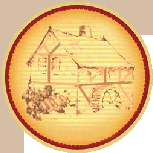by Les Saidel - May, 2011
One of the most important hallmarks of a great bread is its crust.
Different breads have different types of crust. For example a French baguette is typified by a crackly, crispy crust. A regular sandwich loaf will typically have a very soft crust and there are many other types of bread between these two extremes.
A perfect crust is a crust that is applicable for that specific type of bread. If you bake a baguette with a perfect soft crust, it may be perfectly soft, but it is not a baguette - the crust is inappropriate for that kind of bread. So the first rule is to define what type of crust you require and then pair it with the appropriate type of bread.
You have three stages at which you may control crust texture and appearance. The mixing stage, the basting stage and the baking stage.
Let's start with the mixing stage. The ingredients in the recipe will ultimately define the eventual texture and appearance of the crust. The following are rules of thumb -
1. The more margarine/butter/oil used in the recipe, the softer the crust will be. To get a crispier crust, reduce or eliminate the oils/fats from the recipe.
2. The more sugars in the recipe (sugar, honey, malt etc.) the darker the crust color will be when it is baked. To get a deeper color in the crust, add more sugar (or if you want the color without the sweetness, add malt).
Next is the basting stage. Basting is usually performed immediately prior to inserting the bread in the oven. You have different options for basting (basting, for the uninitiated, is brushing the loaf using a brush and some liquid mixture prior to baking) -
1. Egg. This will give the crust a nice shine when baked and will also deepen the color. To achieve a deep color, use only the yolk. To achieve a lighter hue but with the shine, use only the white. Using the entire egg will give a shade in between. You need to balance the amount of egg yolk used for basting according to the sugar content in the dough. Playing around with different combinations of sugar in the dough and egg yolk will result in diifferent hues. Experiment. Egg is also a crust softener. If you want a crust with a shine that is crispy, dilute the egg/yolk/white with water.
2. Oil. Oil is a dough softener that will give you a nice soft crust, especially if complemented by mixing oil/butter/margarine in the actual dough. The amount of oil you need to baste depends on the dough fat/oil content. Experiment to see how this changes the crust texture. Basting with oil will also deepen the hue of the crust, not as much as egg though.
3. Water. Basting the bread with water or spraying it with water using a kitchen sprayer will usually result in a crispy, crackly crust (provided that the baking temperature is sufficient).
Finally the baking stage. The following factors determine the crust appearance -
1. The temperature in the oven during baking will determine the crust color. The higher the temperature the darker the resulting crust will be.
2. The humidity level in the oven will determine the crust texture. The more humidity, the more crispy the crust (which is why basting the bread with water prior to baking makes it more crispy - it raises the humidity level in the oven). Professional baking ovens have steam injectors to raise the humidity level in the oven. You can duplicate this in a home oven by heating the oven with an empty metal tray on the shelf below the shelf the bread is being baked on. After you put the bread in the oven and prior to closing the oven door, pour a half a cup of boiling water onto this metal tray (which is oven temperature) and immediately close the oven door. This will fill the oven space with steam. Incidentally this is a great trick if you want to bake your own home made baguettes.
If you want a very crispy, crackly crust, 5 minutes before the end of the bake, open the oven door slightly to let out any steam/humidity remaining in the oven and complete the last 5 minutes of the bake with the door slightly open. This will dry out the crust even more and make it more crispy.
That pretty much explains crust texture and color. Another factor relating to the crust is the crust topography. Some breads have a smooth crust, some have incisions cut in them for effect and to enhance appearance. To understand this we need to understand what happens when the bread bakes.
When bread is inserted into a hot oven, the shock of the heat causes the yeast to go into a proliferation frenzy during which they produce an increased amount of CO2. This continues until the internal dough temperature rises about 35 degrees C at which time the heat begins to retard the yeast growth and eventually, as it rises further, it kills the yeast cells completely. This short increase in reproduction of the yeast results in the bread rising higher in the oven, or what professional bakers call oven spring.
Now consider this. What will happen if while those yeast cells are frantically reproducing, the crust has already dried out and become less flexible? The bread will still rise, but because the crust is no longer flexible, it will crack and the rising dough will burst through the cracks. If any of you have observed this phenomenon when you bake and have been disappointed with unattractive cracked loaves with dough bursting forth irregularly, this is the reason why.
To prevent this uncontrolled cracking and bursting forth of dough, you can either ensure that the dough remains flexible for the duration of the oven spring, by basting the dough either with water, egg or oil, or alternatively you can "score" the loaf.
Scoring is making an incision in the crust prior to baking with a sharp knife (a razor blade or utility knife is best). Besides creating a pattern in the resulting bread crust, this scoring also controls the location of the dough bursting forth from the crust. Usually the outer crust is drier than the exposed dough from the incision and therefore the dough will burst forth from that softer point. This usually manifests itself as a widening of the slit. This technique can be used to enhance appearance and even control bread shape and height.
Whew, that's a lot of variables and a lot of info to digest in one session. Try playing around and experimenting with one variable at a time and slowly complement it with the others and soon you will see how it is possible to obtain almost any kind of bread shape or texture by manipulating these primary strings much as a puppeteer manipulates a puppet.
Les Saidel
© Copyright. All rights in the above articles are reserved to the author Les Saidel.
No part of this website or the above articles may be transmitted in any form or by any
means without permission in writing from the author.




